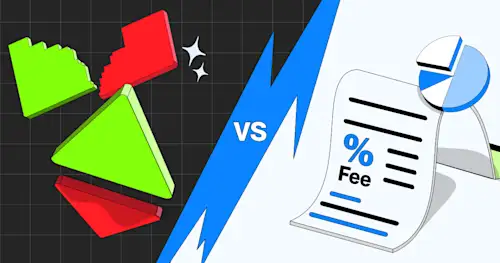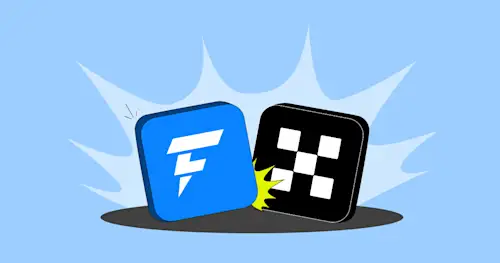Related Articles






When most traders think about crypto trading fees, they focus on the visible costs—like maker and taker fees charged by exchanges. However, the true cost of trading goes beyond published fee schedules. Spreads and slippage can eat into profits just as much, especially in volatile markets or when using high leverage.
Understanding these hidden costs and how they interact can help you choose low-fee crypto exchanges, optimize your strategy, and ultimately reduce trading costs.
Most exchanges uses a maker-taker fee model, which rewards liquidity providers and charges those who take liquidity:
Paid when you place a limit order that adds liquidity to the order book. These are usually lower, and some exchanges even offer rebates.
Paid when you place a market order or instantly match an existing order. These are typically higher because they remove liquidity.
Example: If an exchange charges 0.1% maker and 0.2% taker fees, buying $10,000 worth of Bitcoin at market price would cost you $20 in fees.
Different platforms offer different structures, which is why a crypto fees comparison across exchanges is essential.
The spread is the difference between the bid (buy) and ask (sell) price. Even if an exchange advertises low trading fees, wide spreads can increase your real trading costs.
Tight Spreads: Common on high-liquidity exchanges, where order books are deep and actively traded.
Wide Spreads: More likely on low-liquidity pairs, where fewer traders mean higher costs to enter and exit positions.
Example: If BTC is listed at $50,000 (buy) and $50,050 (sell), the spread is $50. On a $10,000 trade, you’re losing value right from the start.
Exchanges like Flipster differentiate themselves by offering offer tight spreads on all listed pairs, ensuring your entry and exit are closer to the real market price.
Slippage occurs when your order executes at a worse price than expected due to market volatility or insufficient liquidity.
Positive Slippage: Rare, but you get a slightly better price.
Negative Slippage: More common, where you pay more (or receive less) than intended.
Example: You place a $10,000 market buy order for ETH at $3,000. By the time it executes, the price has jumped to $3,010. That’s $33 lost instantly (plus fees and spreads).
The impact of slippage increases with:
Market volatility
Order size relative to order book depth
Using market orders instead of limit orders
To understand your true trading cost, you need to consider:
Maker/Taker Fees – The published exchange fee schedule.
Spreads – The gap between buy and sell prices.
Slippage – The execution difference in volatile or illiquid markets.
Here are some actionable strategies to minimize fees, spreads, and slippage:
Choose Low-Fee Crypto Exchanges: Platforms like Flipster start at just 0.05% taker fees and offer tiered discounts.
Trade Pairs with High Liquidity: Major assets like BTC, ETH, or USDT pairs tend to have tighter spreads and less slippage.
Use Limit Orders: Placing limit orders helps avoid slippage and qualifies you for lower maker fees.
Avoid Trading in High Volatility News Events: Price spikes often lead to wider spreads and higher slippage.
Leverage Exchange Features: Some exchanges offer tight spreads, fee discounts, or VIP tiers that significantly lower costs for active traders.
For active traders, especially scalpers and day traders, small differences in trading costs compound over time. Paying 0.2% vs. 0.05% in fees, combined with tighter spreads, can be the difference between long-term profitability and losses.
By being aware of how crypto trading fees, spreads, and slippage interact, you can make smarter choices about where and how you trade.
The true cost of trading in crypto isn’t just about published maker-taker fees. Spreads and slippage often add hidden costs that can erode profits. By choosing low-fee crypto exchanges, trading liquid pairs, and using smart order types, you can reduce trading costs and retain more of your returns.
Ready to trade smarter? Start trading on Flipster today and experience ultra-low fees, tight spreads, and instant fill to maximize your profitability.
Disclaimer: This material is for information purposes only and does not constitute financial advice. Flipster makes no recommendations or guarantees in respect of any digital asset, product, or service. Trading digital assets and digital asset derivatives comes with a significant risk of loss due to its high price volatility, and is not suitable for all investors. Please refer to our Terms.




